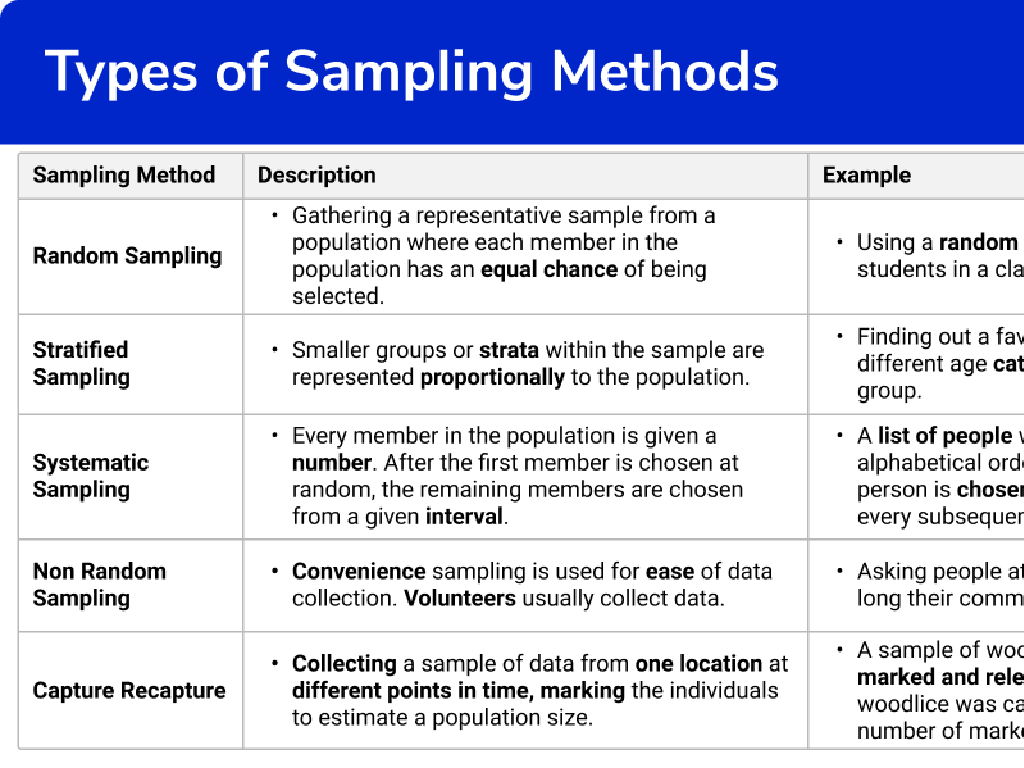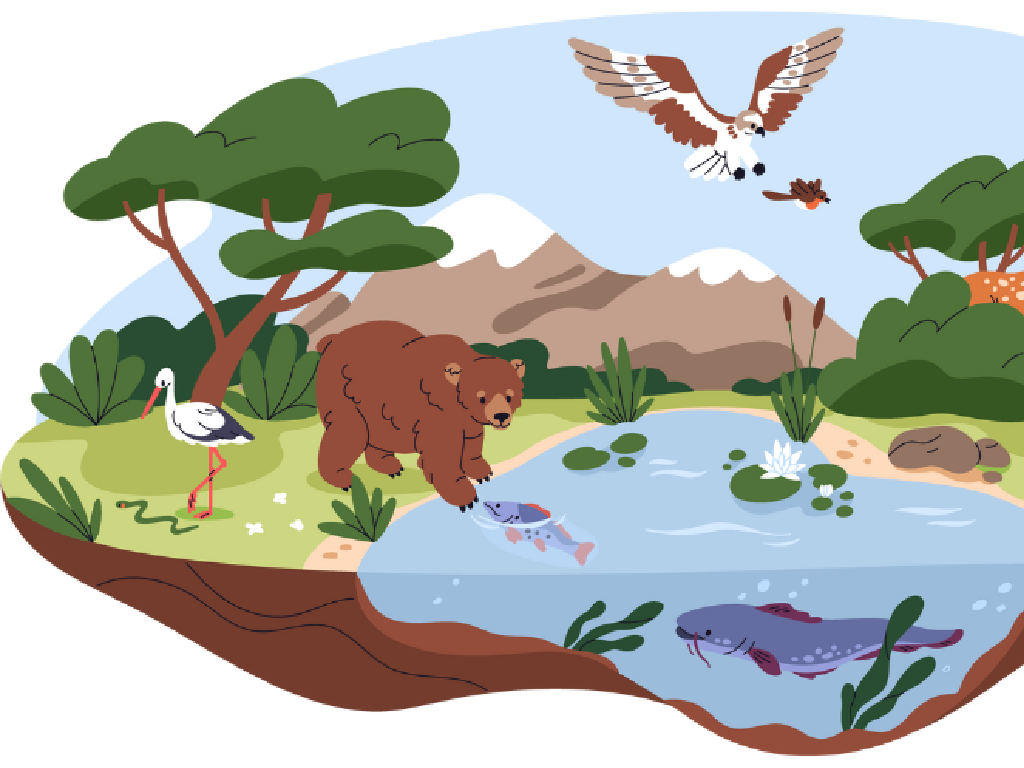George Washington Carver
Subject: Social studies
Grade: Second grade
Topic: Historical Figures
Please LOG IN to download the presentation. Access is available to registered users only.
View More Content
Meet George Washington Carver
– A special historical figure
– What do you know about Carver?
– Carver: Scientist and inventor
– Created many products from peanuts
– He was also a beloved teacher
– Taught farmers better ways to grow crops
|
This slide introduces George Washington Carver as an influential figure in history, aiming to spark curiosity among second-grade students. Begin by asking the class what they already know about Carver to engage them. Explain that Carver was not just a scientist and inventor but also a dedicated teacher who made significant contributions to agriculture. Highlight his work with peanuts and how he educated farmers on crop rotation to improve soil health. Encourage students to think of questions they have about Carver’s life and achievements. This will set the stage for further exploration of his impact on science and society.
Early Life of George Washington Carver
– Born into slavery around 1864
– Grew up in Missouri, loved plants
– Had a garden as a child, called the ‘plant doctor’
– Overcame many challenges
– Faced racial barriers but kept studying
– Earned a Bachelor of Science degree
– One of the first African-Americans to achieve this in college
|
George Washington Carver’s early life is a testament to his resilience and passion for learning. Born into slavery, Carver’s exact birth date is unknown, but he is believed to have been born around 1864. He was raised in Missouri, where he developed a fascination with plants and was known for his garden, earning him the nickname ‘the plant doctor.’ Despite facing significant racial discrimination, Carver pursued education relentlessly and became one of the first African-Americans to earn a Bachelor of Science degree. His determination and achievements set an inspiring example for all. As you discuss Carver’s early life, emphasize his love for plants and learning, and how he overcame the challenges of his time to achieve great things in education.
George Washington Carver’s Agricultural Achievements
– Carver’s fame with peanuts
– Known for innovative work with peanuts
– Over 300 plant uses discovered
– Created products like ink, dyes, and food from peanuts
– Helped Southern farmers
– Taught farmers crop rotation for soil health
– Improved farmers’ lives
|
George Washington Carver was a brilliant scientist and inventor who is best remembered for his work with peanuts. He developed over 300 uses for peanuts and other plants, which played a significant role in boosting the agricultural economy in the South. Carver’s inventions included creating new products like ink, dyes, and food, which helped farmers diversify their crops and improve their livelihoods. His teachings on crop rotation also helped restore nitrogen to the soil, which is essential for plant growth. This slide aims to highlight Carver’s impact on agriculture and how his work directly improved the lives of many farmers.
The Importance of Crop Rotation
– Carver’s lessons to farmers
– Taught farmers to grow different crops to help soil
– Crop rotation improves soil
– Soil gets better when different crops are planted
– It prevents pests and diseases
– Growing the same crop can attract more bugs and sickness
– Benefits of changing crops yearly
– Changing crops helps soil stay healthy and make good food
|
George Washington Carver was an important figure in agriculture who taught farmers the value of crop rotation. By growing different crops each year, farmers could improve the health of their soil, which is essential for good plant growth. This practice also helps in preventing the buildup of pests and diseases, which are more likely to occur when the same crop is grown repeatedly. Carver’s teachings helped many farmers increase their crop yields and promote sustainable farming practices. In class, we can discuss how changing crops can be similar to students rotating their activities or games to keep things fresh and exciting.
The Legacy of George Washington Carver
– Transformed American agriculture
– Introduced crop rotation and alternative crops
– Role model for many
– Broke barriers as an African-American scientist
– Champion of education
– Taught at Tuskegee Institute, believed in lifelong learning
– Inspiration for innovation
– Created 300+ products from peanuts, sweet potatoes, and more
|
George Washington Carver made significant contributions to agriculture by promoting alternative crops like peanuts and sweet potatoes, which improved soil quality and helped farmers’ economic situations. His achievements as an African-American scientist during a time of racial segregation made him a powerful role model. Carver’s commitment to education was evident through his work at the Tuskegee Institute, where he educated and empowered many students. His innovative spirit led to the creation of numerous products, showcasing the value of creativity and hard work. His legacy continues to inspire people to pursue knowledge and innovation for the betterment of society.
Class Activity: Planting Our Own Peanuts!
– We’re going to plant peanuts
– Observe your plant’s growth
– Watch how it changes each day
– Care for your peanut plant
– Give it water and sunlight
– Imagine being Carver with plants
– Think about Carver’s experiments
|
This activity is designed to give students a hands-on experience similar to the work of George Washington Carver. Each student will plant a peanut in a cup and will be responsible for its care, including watering and ensuring it gets enough sunlight. Over time, they will observe and record the growth and changes, which will help them understand the life cycle of plants and the patience required in scientific study. Encourage them to consider Carver’s dedication and innovation as they tend to their plants. Possible activities include creating a plant journal, drawing pictures of each growth stage, and discussing observations as a class. This will foster a connection with Carver’s work and the importance of agriculture and botany.






